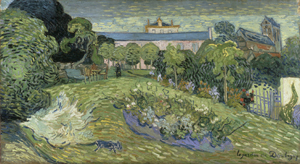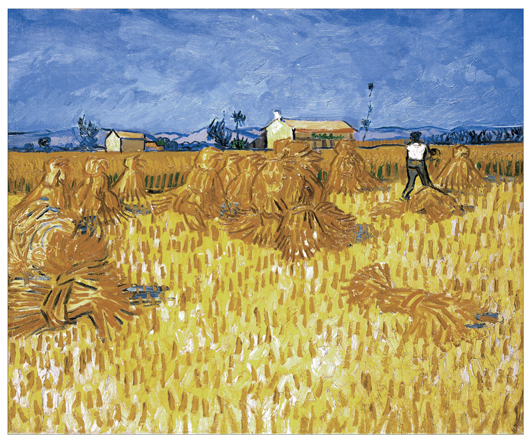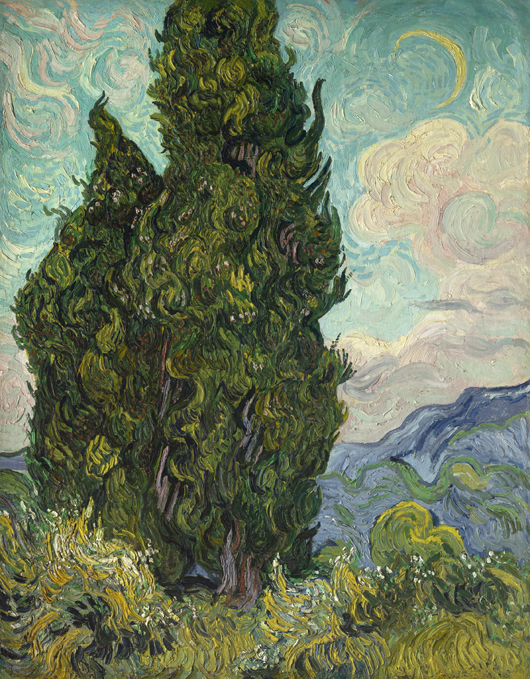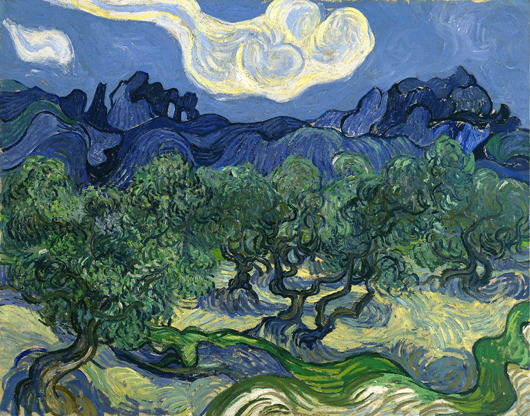
BASEL, Switzerland, (AP) – Vincent van Gogh preferred painting portraits and figures, but it was his landscapes that sparked a revolution in art.
Seventy landscapes, among them key works never seen by wide audiences, are presented in an ambitious show at Basel’s distinguished Kunstmuseum. It is billed as “Europe’s art event of the year.”
The exhibition Vincent van Gogh Between Earth and Heaven focuses for the first time exclusively on his landscapes, the most frequent motif in his work. Organizers expect more than half a million visitors before the exhibition ends Sept. 27.
Lenders include museums in the United States, Japan, Israel and seven European countries as well as several private collectors. Kunstmuseum director Bernhard Mendes Buergi, who is also one of the curators, said it was “quite extraordinary that they were permitted to travel to Basel.”
The combined insurance value of the works is given at more than $2 billion. Premiums and the cost of mounting the exhibition are certain to be correspondingly high.
Buergi said the project would not have been possible without its sponsor, UBS, the largest Swiss bank. UBS has since become a top victim of the financial crisis and is getting substantial survival subsidies from the government.
The show covers all phases of van Gogh’s landscape art. The pieces mirror the continuous shifts in his mental state, alternating between moments of hope and fits of self-doubt and despair that eventually drove him to suicide at 37.
“Van Gogh was an artist who shaped himself by destroying himself,” Gottfried Boehm, a prominent Swiss art historian, writes in the exhibition catalog, citing excessive drinking combined with equally excessive zeal to reach van Gogh’s “artistic goal of maximizing the evocative power of color.”
Somber tones dominate the paintings of his early years. Even the first one on view at Basel, Flower Beds in Holland, dated April 1883, radiates a dusky atmosphere despite blue skies. Visitors get a similar impression from a picture van Gogh did the next year of the tower church where his father, a Calvinist pastor, gave the Sunday sermons.
His brother Theo, an art dealer in Paris who financially supported the artist throughout his life, talked him into dropping such a darkening approach if he wanted to become a respected modern artist.
In 1880, van Gogh joined his brother in Paris, where Theo put him in touch with Claude Monet and other successful impressionists. The two years he stayed in the French capital brought a profound change in his work, a brightened palette and a different technique. Particularly striking to viewers is a multicolored picture of a Fourteenth of July Celebration reflecting a radically bold brushwork.
In exchange for regular financial support, Theo received all landscapes. Vincent repeatedly made plain that he liked painting figures more than landscapes, but Theo presumably thought the latter would sell better.
Van Gogh’s bias vanished after he ended his stay in Paris early in 1888 and moved to Arles, in the South of France, where a bright spring sun soon intensified the color in his paintings. On view are spectacular samples of that new approach, among them a series of wheat field and harvest pictures.
A sudden change in his mental state, which had never been stable since his youth, resulted in a 1888 Christmas Eve crisis in which he cut off part of his earlobe. A self-portrait showing him with the bandaged head is reproduced in the exhibition catalog.
Attesting to his relapse into depression is the last of 20 Arles pictures, Landscape Under Stormy Sky, with ominously threatening clouds. He painted it in May 1889 only a few days before committing himself into an asylum at Saint-Remy, where farmers called him a “crazy redhead.”
The transfer marked what many consider the peak of his career. Outstanding among the works he did there are the swirling Cypresses, on loan from the Metropolitan Museum. He did the painting from the window of his room where he was confined for several months.
After a new relapse, his brother talked him into leaving Saint-Remy and seeking the treatment of a homeopath, Dr. Paul Gachet, in the village of Auvers north of Paris. It was there that van Gogh’s output reached an unprecedented feverish pace – 75 paintings within 70 days. Ten of them, all landscapes, are on view, the last depicting swirling wheat stacks, painted just days before van Gogh shot himself in the chest. He died two days later on July 29, 1890.
Copyright 2009 Associated Press. All rights reserved. This material may not be published, broadcast, rewritten, or redistributed.
AP-CS-05-19-09 1409EDT
ADDITIONAL IMAGES OF NOTE





